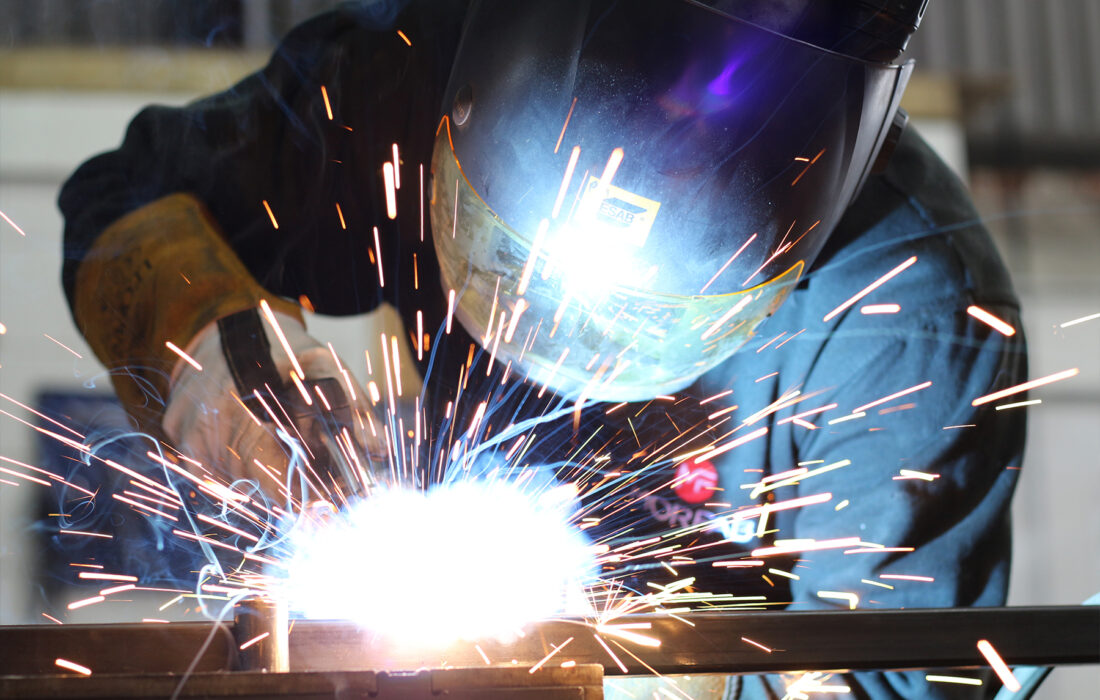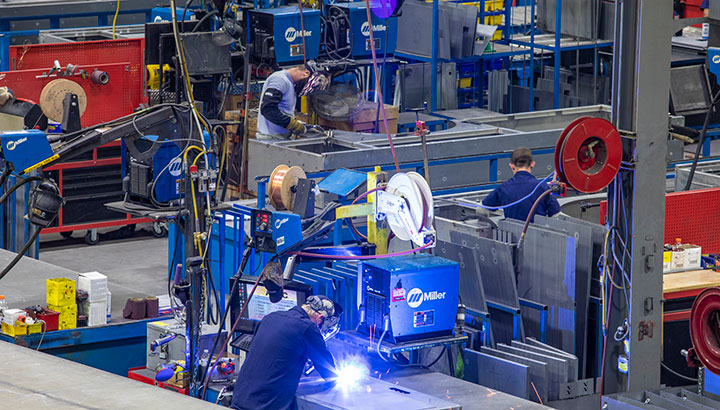Do you know signs of incomplete fusion? Montana Mobile Welding and Repair explains how to detect them
Everything about Welding: Secret Insights Into Techniques and Finest Practices for Success
Welding incorporates a variety of strategies, each fit for particular materials and applications. Comprehending these techniques, such as GMAW, SMAW, and TIG, is essential for accomplishing suitable results. Furthermore, the best devices and safety practices can not be ignored. As preparation and troubleshooting play critical functions in the welding process, grasping these aspects can considerably enhance the top quality of the end product. What are the crucial factors that guarantee an effective weld?
Understanding Different Welding Methods
Welding methods incorporate a selection of methods, each suited to specific applications and materials. Among one of the most common strategies are Gas Metal Arc Welding (GMAW), Shielded Steel Arc Welding (SMAW), and Tungsten Inert Gas Welding (TIG) GMAW, also known as MIG welding, is prominent for its rate and adaptability, making it excellent for thin products. SMAW, or stick welding, is preferred for its simpleness and effectiveness in outdoor settings, specifically with thicker steels. TIG welding uses precision and control, making it suitable for complex job and non-ferrous metals (Fabrication). Each strategy has its unique advantages and considerations, permitting welders to select the best method based on the project's requirements, product kind, and wanted end results. Understanding these techniques is crucial for effective welding
Important Welding Equipment and Tools
While various welding methods require details abilities, the appropriate devices and tools are just as important for attaining high quality outcomes. Important welding equipment includes welding devices, which differ depending on the strategy-- such as MIG, TIG, or stick welding. Protective gear, consisting of aprons, helmets, and handwear covers, assurances safety and security and comfort during the process. Furthermore, fixtures and clamps aid safeguard products in position, making sure accuracy in welds. Consumables like welding rods, cord, and protecting gas are additionally essential parts that affect the quality of the weld. Devices such as cutters and mills facilitate surface prep work and post-weld finishing, adding to a specialist result. Buying premium tools inevitably boosts the performance and effectiveness of welding tasks.
Security Practices in Welding
Proper safety techniques are vital in the welding sector to protect employees from prospective threats. Welders must use appropriate personal protective devices (PPE), consisting of helmets with correct shading, handwear covers, and flame-resistant clothing. Adequate air flow is crucial to reduce direct exposure to harmful fumes and gases produced during the welding procedure. Additionally, workers ought to be learnt the correct handling of welding tools to avoid accidents. Fire safety measures, such as keeping flammable materials away from the welding location and having fire extinguishers conveniently offered, are necessary. Regular inspections of equipment and work spaces can assist identify possible threats before they lead to crashes. By adhering to these safety practices, welders can create a much safer working setting and decrease dangers connected with their profession.
Preparing Products for Welding
Preparing products for welding is a crucial step that significantly influences the top quality and integrity of the end product (Montana Mobile Welding and Repair Welding). Appropriate prep work includes cleansing the surface areas to remove contaminants such as oil, dust, and rust, which can endanger the weld. Strategies such as grinding, fining sand, or making use of solvents are commonly utilized to achieve a clean surface. Furthermore, making certain that the materials mesh comfortably is crucial; voids can bring about weak welds. It's likewise essential to take into consideration the alignment and positioning of the elements, as this will influence the simplicity of welding and the last outcome. Choosing the appropriate filler material and making certain compatibility with the base steels is important for achieving strong, durable welds.
Tips for Achieving High-Quality Welds
Accomplishing high-quality welds needs focus to information and adherence to best methods throughout the welding process. Correct joint preparation is essential, guaranteeing surface areas are clean and complimentary from pollutants. Choosing the proper filler material and welding method based on the base steels is essential for perfect bonding. Maintaining constant travel speed and angle while welding can protect against flaws and advertise uniformity. In addition, regulating warm input is necessary; extreme warmth can bring about warping and deteriorated joints. Consistently examining the welds throughout the procedure enables for immediate changes if needed. Finally, utilizing proper post-weld treatments, such as cleansing and stress and anxiety alleviation, can enhance the longevity and integrity of the weld, ultimately making sure a successful result.
Repairing Typical Welding Issues
Welding often presents challenges that can influence the top quality and honesty of the end product. Usual issues such as porosity, inconsistent weld grains, and overheating can develop, each needing details fixing methods. Recognizing these troubles is essential for welders to boost their skills and attain ideal results.
Porosity Troubles Described
Porosity can commonly be forgotten, it continues to be an essential issue in welding that can endanger the stability of a completed product. Porosity refers to the visibility of tiny gas pockets within the weld grain, which can compromise the joint and lead to premature failure. This issue generally develops from impurities, wetness, or improper securing gas protection during the welding procedure. To minimize porosity, welders should confirm that the base materials are dry and clean, utilize ideal protecting gases, and maintain regular welding specifications. Frequently inspecting the equipment and atmosphere can likewise assist recognize potential issues before they materialize in the weld. Dealing with porosity successfully is essential for attaining strong, long lasting welds that meet quality requirements.

Irregular Weld Beans
Inconsistent weld beads can considerably impact the high quality and stamina of a completed item. Different elements contribute to this concern, including inappropriate travel speed, inaccurate amperage setups, and inconsistent electrode angles. When the welder relocates also quickly, a bead may appear slim and do not have infiltration, while relocating as well slowly can cause too much accumulation. Additionally, utilizing the wrong amperage can cause either damaging or excessive spatter, both of which compromise weld honesty. The welder's technique, such as irregular lantern activity, can also result in uneven grain appearance. To minimize these troubles, welders must concentrate on maintaining consistent, controlled motions and making sure correct devices setups to accomplish harmony in their welds. Uniformity is crucial to attaining reliable and solid welds.
Overheating and Bending Issues
Too much warmth throughout the welding procedure can result in considerable overheating and contorting problems, influencing the architectural stability of the work surface. These problems often manifest as distortion, which can compromise positioning and fit-up, making additional assembly testing. Variables adding to overheating include the choice of welding criteria, such as voltage and take a trip speed, as well as the sort of product being bonded. To mitigate these issues, welders must preserve constant traveling speed and appropriate heat input while checking the work surface temperature level. Additionally, preheating or post-weld warmth treatment can help minimize stress and anxieties brought on by rapid cooling - Montana Mobile Welding and Repair. Routine inspection and adherence to ideal practices are vital in stopping overheating and guaranteeing the longevity and integrity of welded structures
Often Asked Questions
What Are the Job Opportunities in the Welding Industry?
The welding market provides diverse occupation opportunities, including placements as welders, inspectors, teachers, and engineers. Specialists can work in production, construction, aerospace, and vehicle industries, taking advantage of strong need and affordable wages in various functions.
Just How Can I Enhance My Welding Speed Without Giving Up High Quality?
To enhance welding rate without sacrificing quality, one need to practice efficient methods, maintain devices, maximize setups, and boost hand-eye control. Routine training and seeking responses can likewise considerably add to attaining much faster, high-quality welds.
What Accreditations Are Readily Available for Welders?
Countless certifications exist for welders, consisting of those from the American Welding Society (AWS), the National Facility for Building Education And Learning and Research Study (NCCER), and different industry-specific companies. These Montana Mobile Welding and Repair Belgrade credentials enhance employability and show skill efficiency.
Just How Does Welding Affect the Features of Metals?
Welding influences the residential properties of metals by modifying their microstructure, which can lead to changes in solidity, toughness, and ductility. Heat input and air conditioning prices throughout the process greatly impact these material qualities.
Can I Weld Dissimilar Metals With Each Other?
